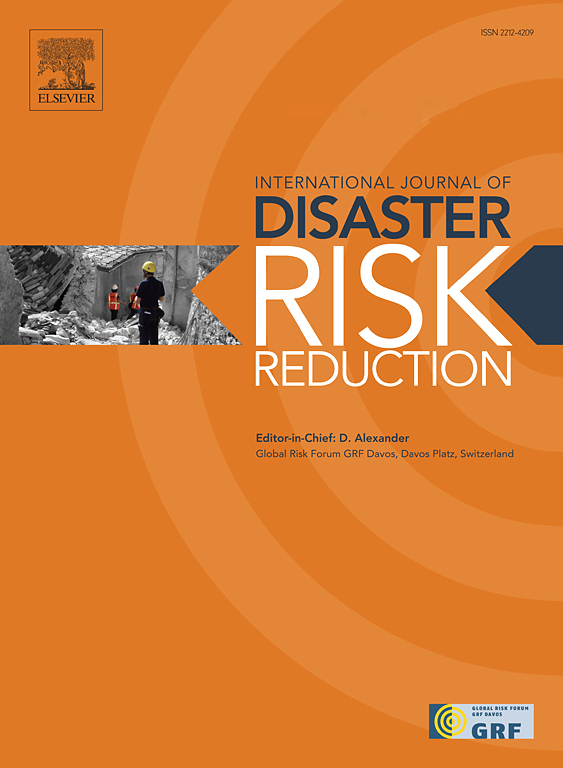‘HiFlo-DAT’: A flood hazard event-disaster database for the Kullu District, Himachal Pradesh, Indian Himalaya
IF 4.2
1区 地球科学
Q1 GEOSCIENCES, MULTIDISCIPLINARY
International journal of disaster risk reduction
Pub Date : 2025-02-25
DOI:10.1016/j.ijdrr.2025.105336
引用次数: 0
Abstract
‘HiFlo-DAT’ (Himalayan Flood Database) contributes to the disaster risk reduction (DRR) agenda of developing methodologies for the assembly, analysis, and application of disaggregated/sub-national disaster loss data; here for mountain floods in the Kullu District, Himachal Pradesh, India. The HiFlo-DAT architecture is aligned to international best practice/local needs. It uses English-language documents, principally newspapers and government reports (1835–2020), and comprises 128 flood events, at 59 locations, over 175 years (1846–2020). This open-access database brings a substantial improvement over existing compilations. Subject to the fidelity of historical event recording, analyses highlight temporal/process patterns inclusive of flood-rich periods (1890–1900s; 1990s-present: 68 % of events), increasing flood occurrence towards the present, the prevalence of rainfall causation (55 %), and the dominance of summer monsoon flooding (June–September: 87 %). Spatially, of the 59 locations recording floods, 76 % record a single event, 24 % have two or more events, and four tributaries record 8–14 events. Key flood impact receptors were roads (55 floods), bridges (54 floods and 94 impacts) and vulnerable labourer-migrant communities (70 % fatalities and 83 % affected) notably associated with construction projects in remote/exposed locations. Key opportunities for policy and practice development include transference of the HiFlo-DAT methodology across the wider Indian Himalayan Region and trans-boundary basins; multi-disciplinary approaches to corroborate and extend documentary-based databases; improved access to public archive materials; routine integration of historical flood data into DRR/climate change adaptation management planning and infrastructure development design; and deeper multi-agency partnership to record contemporary flood impacts to provide effective data for current/future DRR.
求助全文
约1分钟内获得全文
求助全文
来源期刊

International journal of disaster risk reduction
GEOSCIENCES, MULTIDISCIPLINARYMETEOROLOGY-METEOROLOGY & ATMOSPHERIC SCIENCES
CiteScore
8.70
自引率
18.00%
发文量
688
审稿时长
79 days
期刊介绍:
The International Journal of Disaster Risk Reduction (IJDRR) is the journal for researchers, policymakers and practitioners across diverse disciplines: earth sciences and their implications; environmental sciences; engineering; urban studies; geography; and the social sciences. IJDRR publishes fundamental and applied research, critical reviews, policy papers and case studies with a particular focus on multi-disciplinary research that aims to reduce the impact of natural, technological, social and intentional disasters. IJDRR stimulates exchange of ideas and knowledge transfer on disaster research, mitigation, adaptation, prevention and risk reduction at all geographical scales: local, national and international.
Key topics:-
-multifaceted disaster and cascading disasters
-the development of disaster risk reduction strategies and techniques
-discussion and development of effective warning and educational systems for risk management at all levels
-disasters associated with climate change
-vulnerability analysis and vulnerability trends
-emerging risks
-resilience against disasters.
The journal particularly encourages papers that approach risk from a multi-disciplinary perspective.
 求助内容:
求助内容: 应助结果提醒方式:
应助结果提醒方式:


